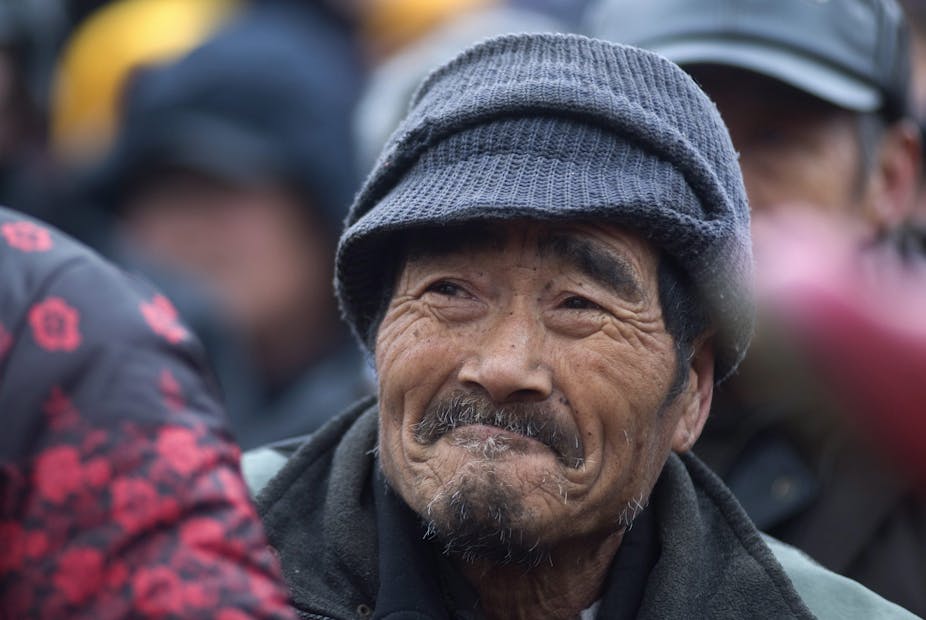The demographic profile of the world is changing. Ageing is a global phenomenon, an unprecedented, pervasive, profound and an enduring process for humanity. The current and future burden and opportunities of this phenomenon are important for all countries.
Alongside ageing populations, the growing rates of chronic illness globally have been described as a building “tsunami” for which all governments and societies will need to prepare.
Our focus needs to be on optimising the quality of life for older people through effective health and social interventions. We need to concentrate on how they may continue to contribute to, rather than detract from, the prosperity and social capital.
Healthy ageing approaches recognise the rights and aspirations of older people and also provide ways to reduce the perceived “burden” of population ageing.
In terms of population ageing, China is in a unique position because:
it has the largest absolute number of older people globally. The number of people aged over 60 reached 165 million in 2011 and this number is growing.
the rate of ageing is accelerating, and growth of the number of older people within China is three times the rate of the overall national population increase. This dynamic growth is in no small measure due to China’s very effective population growth strategy, especially the one-child policy, which has resulted in major changes to its demography.
the proportion of people aged 65 years or over has doubled in 30 years. This same change took 70 years in the United States and 130 years in France.
currently 13% of the total Chinese population is aged 60 years and above (China population census and population statistics), with 8.2% aged 65 years and above.
it will experience the increase in ageing of its population well in advance of the levels of economic prosperity reached in developed countries that have had the same change. In such countries, GDP per capita is much higher than in China.
China – and other countries significantly affected by ageing populations and increased prevalence of chronic illness – will need an income and social support system, an effective health system and many other government policies and services to handle these momentous changes.
When you examine the patterns of illness that confront ageing populations, you can see that many are changeable. Mature onset diabetes, for example, is avoidable and can even be reversed with appropriate diet, exercise and social support regimens.
In China, the Happy Life Club project is one example of an approach to healthy ageing. I am leading this project with my colleague Professor Tuohong Zhang from Peking University and my colleagues Dr Yang Hui and Professor Shane Thomas from Monash and the Fengtai District government, Beijing.
The Happy Life Club is a chronic illness management system based upon earlier Australian work conducted by us and our colleagues. The club trains doctors and nurses to change the behaviour of people with diabetes, and other chronic conditions such as heart disease, through the use of motivational interviewing techniques.
Initially the Happy Life Club intervention was conducted in Fangzhuang, a large residential area of Beijing. The program has now extended to the larger Fengtai district of Beijing with plans for further extension to other Chinese cities and other sites, including Malaysia.
Our large-scale research shows that the approach is highly effective. We are currently conducting the Chinese economic modelling, but the Australian modelling showed a net benefit of AUD $16,000 a year for each participant due to improved health and lower use of services.
Participants reduced their risk factors, and improved the management of their disease, and their quality of life and psychological well-being. They also increased their social networks and were better able to continue their contributions to their family and society.
Effective, targeted and proven prevention and management of chronic diseases can not only save countries with large ageing populations a great deal of money but also results in improved quality of life for older people, facilitating their social participation. Such approaches contribute to the UN Second World Assembly on Ageing’s call to build “a society for all ages”.

